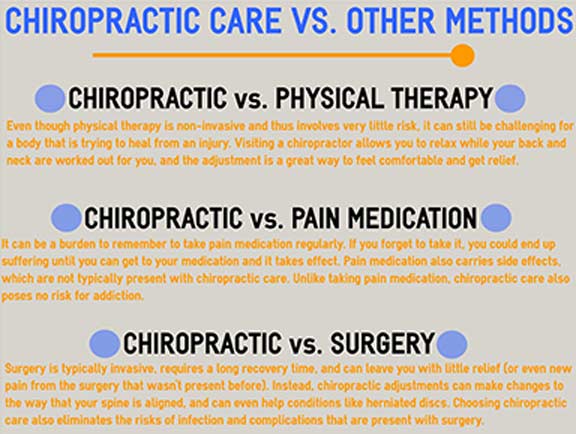The Duty Of Pose In Back Pain: Tips For Achieving And Preserving Good Positioning Throughout Your Day
The Duty Of Pose In Back Pain: Tips For Achieving And Preserving Good Positioning Throughout Your Day
Blog Article
Produced By-Kragh McIntyre
Preserving appropriate position isn't just about sitting up straight; it's about straightening your body in a manner that sustains your spinal column and lowers the threat of neck and back pain. The way you rest, stand, and relocate throughout the day can dramatically impact your spine health and wellness. However just how specifically can you ensure excellent alignment consistently, also throughout busy days loaded with different tasks? Allow's delve deeper right into the refined yet impactful modifications you can make to your everyday routine to keep your back satisfied and healthy.
Significance of Appropriate Posture
Correct stance is critical in preserving a healthy and balanced back and stopping pain. When you sit or stand with great position, your spine remains in placement, minimizing pressure on your muscle mass, ligaments, and joints. This positioning enables the body to distribute weight evenly, protecting against extreme stress on particular locations that can result in pain and discomfort. By maintaining your spinal column effectively aligned, you can also enhance your breathing and digestion, as slouching can compress body organs and limit their capability.
In addition, maintaining great position can enhance your total look and positive self-image. When you stand tall with your shoulders back and head held high, you emanate self-confidence and show up more friendly. Great pose can also make you feel a lot more energized and alert, as it advertises proper blood circulation and allows your muscle mass to work successfully.
Integrating correct position right into your everyday routine, whether sitting at a desk, walking, or working out, is necessary for protecting against back pain and promoting total health. Remember, a little change in how you hold yourself can make a substantial difference in exactly how you really feel and function throughout the day.
Common Postural Mistakes
When it involves preserving great posture, numerous people unconsciously make common errors that can contribute to back pain and pain. Among the most common errors is slouching or stooping over while resting or standing. This placement places too much pressure on the spinal column and can lead to muscular tissue discrepancies and pain over time.
One more common mistake is overarching the reduced back, which can squash the natural curve of the back and create pain. Furthermore, crossing pemf therapy austin tx while sitting might feel comfy, yet it can create an imbalance in the hips and hips, causing postural problems.
Using a cushion that's as well soft or too solid while resting can also influence your positioning and contribute to back pain. Lastly, regularly craning your neck to take a look at screens or readjusting your position frequently can strain the neck and shoulders. Being mindful of these usual postural mistakes can assist you maintain much better alignment and reduce the threat of back pain.
Tips for Correcting Placement
To boost your positioning and minimize pain in the back, it's necessary to focus on making small adjustments throughout your day-to-day routine. Beginning by being mindful of your posture. When sitting, guarantee your feet are flat on the floor, your back is straight, and your shoulders are relaxed. Avoid slouching or leaning to one side. Use ergonomic chairs or cushions to support your reduced back.
When standing, disperse your weight equally on both feet, maintain your knees slightly curved, and tuck in your pelvis. Involve your core muscles to sustain your spine. Take https://www.health.com/condition/chronic-pain/donut-pillow-ergonomic-innovations-amazon to extend and walk if you have a less active work. Incorporate workouts that strengthen your core and back muscles, such as planks or bridges.
While sleeping, make use of a cushion that supports the all-natural contour of your neck to maintain proper spinal alignment. Avoid sleeping on your stomach, as it can stress your neck and back. By being mindful of these pointers and making small modifications, you can gradually correct your positioning and ease pain in the back.
Verdict
Keep in mind, maintaining good position is vital to stop pain in the back and advertising spinal wellness. By being mindful of your positioning, distributing weight evenly, and involving your core muscles, you can reduce stress on your back and minimize the threat of discomfort and injury. Include ergonomic assistance, take routine breaks to stretch, and reinforce your core and back muscle mass to keep proper positioning throughout the day. Your back will certainly thanks for it!
